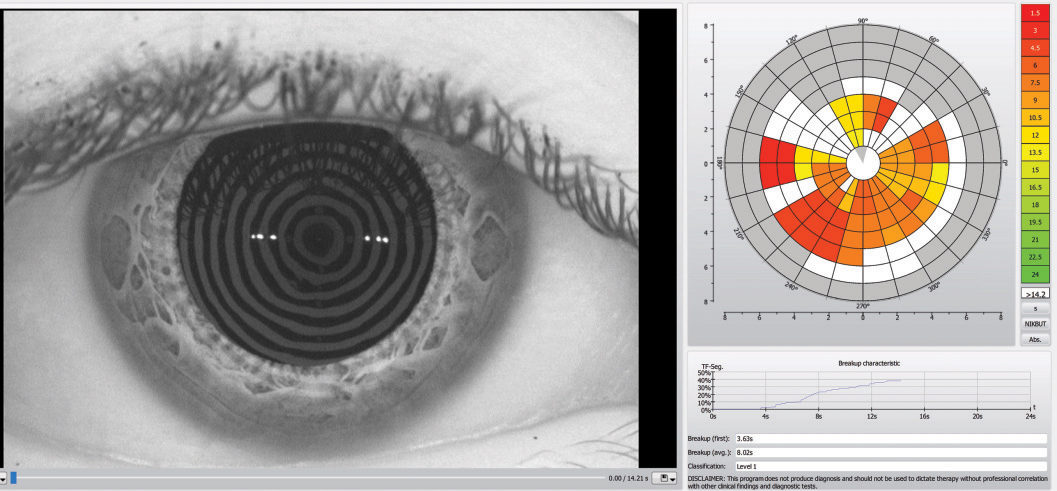 |
The crosslinking procedure seems to reduce tear instability (shown here in a non-KCN patient). Photo: Kambiz Silani, OD. Click image to enlarge. |
The impact of epithelium-on and epithelium-off corneal collagen crosslinking (CXL) in patients with keratoconus has been researched extensively, with epi-off generally showing more positive results in controlling corneal steepening. However, further investigation into how these two methods compare on other measures is needed. Recognizing this, a team of researchers initiated a prospective study to analyze the influence of epi-on and epi-off CXL on the tear function of affected patients.
The study, which included 57 eyes of 34 patients, evaluated individuals with keratoconus who underwent epi-on or epi-off CXL. A series of tests was performed preoperatively as well as at one, three, six and 12 months post-procedure, including best-corrected visual acuity (BCVA), maximum keratometry value (Kmax), ocular surface disease index (OSDI) questionnaire, slit lamp examination, tear meniscus height, first noninvasive Keratograph breakup time (NIKBUT), average NIKBUT and bulbar redness.
Data revealed that BCVA improved in both the epi-on and epi-off groups at most follow-up points, but the researchers did not observe a significant difference between the two cohorts of patients. At the 12-month follow-up, the study authors reported that Kmax improved after crosslinking among all patients with no significant difference. Additionally, the OSDI in both groups decreased postoperatively compared with before surgery.
In their comparison of the two groups, the researchers found that only the change in the tear meniscus height at six months postoperatively was statistically significant, and the pre- and post-op values of the two groups were within the normal range. The change, they reported, was small and had no clinical significance.
Additional findings showed that there was no difference in the first NIKBUT and average NIKBUT across the two patient cohorts. At three months post-procedure, changes in bulbar redness were significantly better among patients who underwent epi-off compared with those who received epi-on. At one year after CXL, both epi-on and epi-off patients had positive results in OSDI, NIKBUT, tear meniscus height and bulbar redness, according to the study authors.
“Our study suggests that both epi-on and epi-off CXL can control the progression of keratoconus, and epi-off CXL is more effective,” they concluded. “Both epi-on and epi-off have a positive effect on dry eye, which can improve the condition of the ocular surface and reduce the symptoms of dry eye in patients.”
Wang X, Bai X, Jin C, et al. Analysis of tear function outcomes following collagen cross-linking treatment in ectatic corneas. J Ophthalmol. March 14, 2022. [Epub ahead of print]. |

